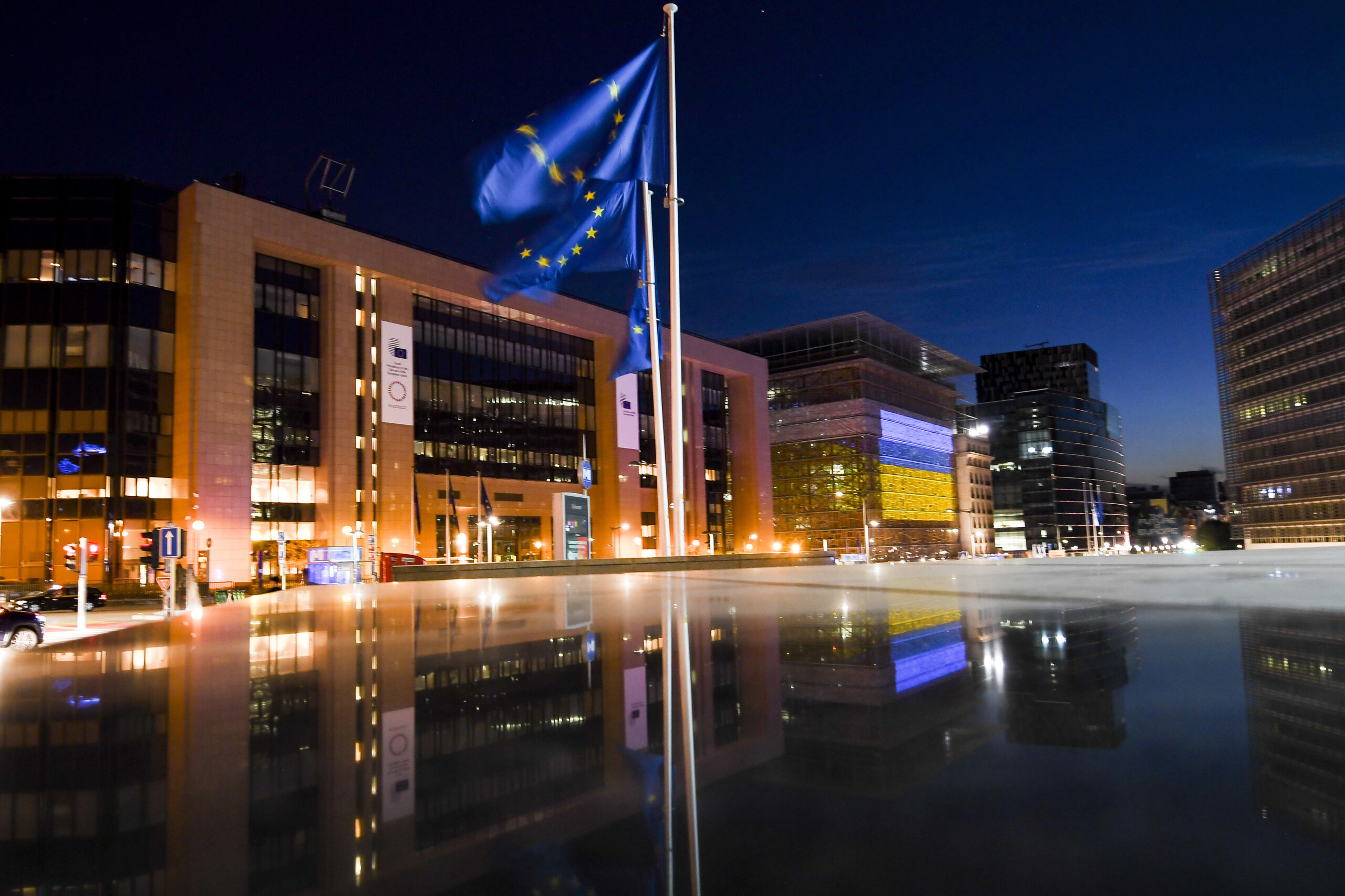In an interview with Eric Maurice, Head of the Robert Schuman Foundation’s office in Brussels, Sierra Tango reviews the European effort one year after the start of Russia’s invasion of Ukraine on February 24, 2022.
Interview with Eric Maurice, head of the Robert Schuman Fondation’s office in Brussels

As we are approaching the first anniversary of Russia’s invasion of Ukraine, what is your assessment of the overall European response?
The European Union has been able to implement a set of strong, varied and long-term measures. It decided it quickly, in the hours and days following the invasion of Ukraine. One year later, it adopts a tenth package of sanctions against Russia, which demonstrates that the unity and collective political will of Europeans are intact.
These economic and trade sanctions have certainly not weakened Russia as much as one might have hoped, in particular, because Vladimir Putin has chosen a war economy to the detriment of the social functions of the State. But precisely because they force him to make this choice, they place a strong constraint on his regime.
In the medium and long term, it is Russia’s industrial, innovative and competitive capabilities that will be burdened, as well as, therefore its strategic ones.
European Union’s balance is also to be traced in what could be called the defensive dimension. The scope of the sanctions was decided on the basis of the cost they would impose on the Europeans themselves. Sanctions are effective and sustainable in the long term only if their cost is lower for the person who decides on them. This is why the Union did not impose an embargo on Russian gas and waited until the end of the year to apply an embargo on part of the oil.
But the cost of the war was high for the Europeans since it was necessary to face the fall in Russian gas deliveries and to broaden the sources of supply, causing high inflation carried by the prices of energy. But as winter comes to an end, we can see that the Europeans have succeeded in their bet to replace Russian gas, to avoid shortages in the cold season and to start lowering prices.

The challenge now is to continue to face the economic and social cost of a war that is likely to be long without weakening the unity between Member States and the internal cohesion of each of them.
How do you analyse the decisions taken in the field of defence and military support to Ukraine?
The most critical decision was the use of the European Peace Facility to finance the supply of arms and equipment to Ukraine. For the first time, even if the funds – 3.6 billion euros so far – are not taken directly from its budget – the Union is helping to arm a country in a full-scale war.
The decision to supply weapons as well as the choice of weapons and their quantity depends on the member states, but it is a jointly managed fund that is used to wage war against Russia. Another important step was the establishment of the EUMAM Ukraine mission, to train between 30 and 40,000 Ukrainian soldiers, particularly on the weapons systems provided by the Europeans.
With regard to European defence, efforts to develop a European defence industry were relaunched by the war and the EDIRPA project (European Defence Industry Reinforcement through common Procurement Act) to support up to 500 million euros the joint purchase by the Member States of European armaments.
It remains to be seen whether this awareness will translate into a collective initiative within the framework of the Union. Indeed, the main fact regarding the war in Ukraine is the renewal of collective defence within the framework of NATO, which once again raises the question of the role and place of the Union as a political entity in the security architecture of the continent.
For the Europeans, it is a question of defining their strategic personality and the articulation between the two institutions.
Regarding military aid, European support is often compared to the United States. What do you think?
According to the Commission, the aid provided by the Member States and the Union amounted to nearly 50 billion euros at the beginning of February, while aid from the United States is around 40 billion dollars.
The Europeans have collectively given more than the Americans, but the State whose support is the most important is indeed the United States, especially since, apart from the French Caesar guns and the Turkish drones, American weapons such as the launchers HIMARS rockets are considered as those which allowed the Ukrainians to resist and counter-attack.
American intelligence is also very present alongside the Ukrainians.
But the contribution of the European Union cannot be assessed solely in accounting terms. Member States have taken in between 4 and 5 million Ukrainians fleeing the war, who benefit from concrete support such as the right to work or go to school.
The Europeans have also been active in allowing Ukrainian agricultural products to be exported, by setting up so-called solidarity corridors, in particular towards the port of Constanta in Romania.
What are the main challenges for the EU now?
The main issue for the EU in this conflict, as for Ukraine, is to hold out over time because the war will probably not end for many months. This means that it will be necessary to mobilize financial and military resources for a long time to come to support Ukraine because a defeat of Russia is a strategic imperative for the Europeans.
It will also require the mobilization of significant resources to deal with the consequences of the war, in particular high energy prices and their repercussions on all value chains, with effects on social cohesion and the acceptability of the economy’s war effort.
The energy transition, provided for by the Green Pact but accelerated by the decoupling with Russia, is also a crucial issue because it is necessary to both diversify and secure supplies of hydrocarbons in the short and medium term and to ensure the deployment of renewable energies and the electrification of mobility in the longer term.
Bearing the cost of such a change in times of war and economic uncertainty is a major challenge.
Added to this is the issue that I would describe as a deep trend, which is the recomposition of the world with the rivalry between the United States and China, the questioning of the order resulting from the post-Second World War and the predominance of technological issues.
The way in which the European Union can respond to this issue, beyond the war in Ukraine, will decide its future.